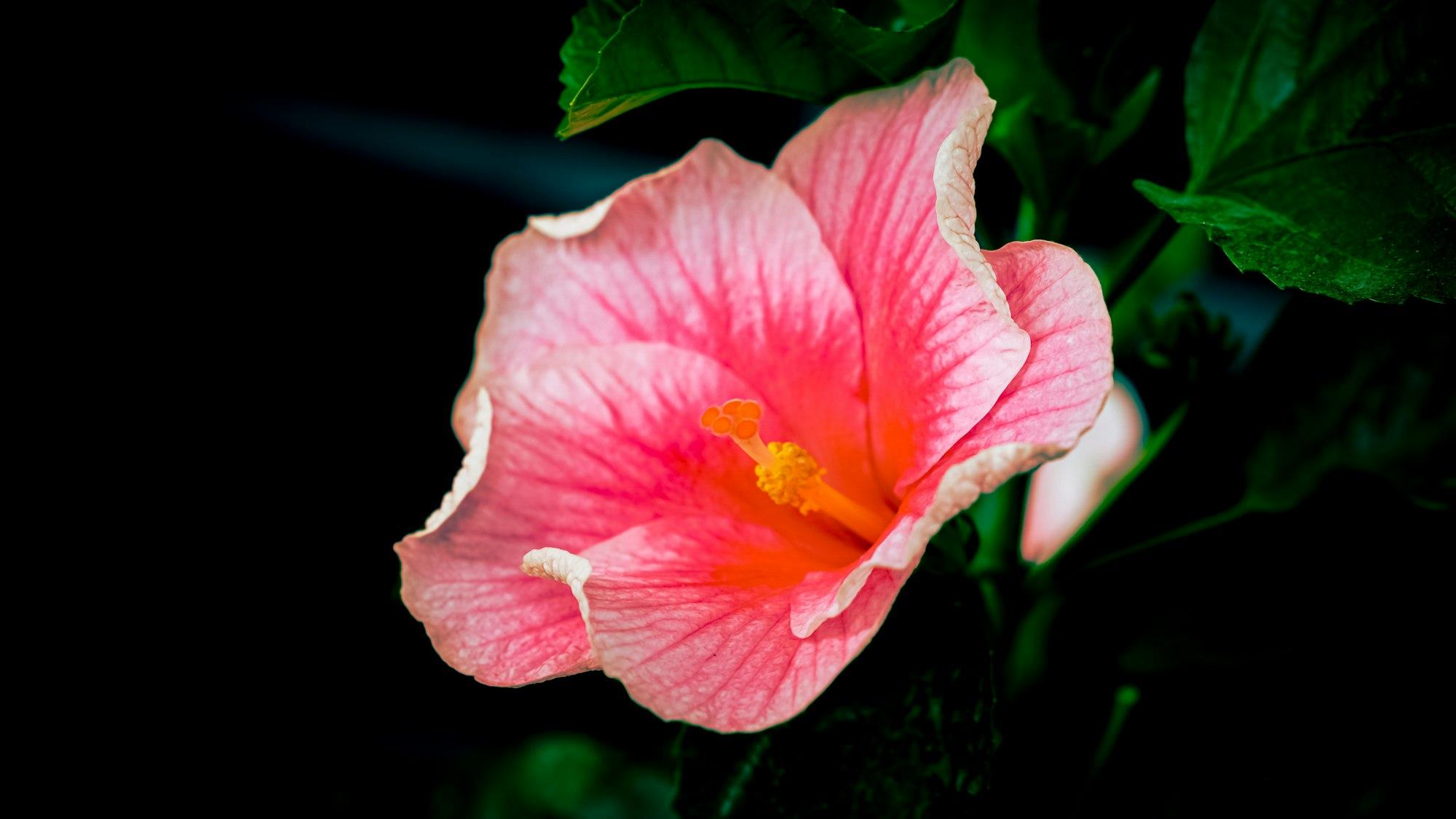Growing and Caring for Hibiscus
Hibiscus plants bring tropical flair to any garden, their vibrant blooms unfurling like nature's own fireworks. From sun-soaked soil to precise pruning, nurturing these floral divas demands attention, but rewards gardeners with a spectacular show of color and grace.

Photo by Ravi Patel
Hibiscus plants are known for their stunning and vibrant flowers, making them a popular choice for gardens and landscapes. However, in order to ensure their health and beauty, proper care is essential. Let's dig into the essential steps for growing and caring for hibiscus plants, including tips for sunlight, soil, watering, temperature, fertilizing, pruning, propagation, pots, winter care, pest control, and promoting blooms.
Before diving into the specifics, let's emphasize the importance of proper hibiscus care. Just like any other plant, hibiscus plants require attention and care to thrive. By providing them with the right conditions and following the guidelines outlined in this article, you can ensure their health and vibrant growth.
Proper Hibiscus Care
Proper care is crucial for the overall health and longevity of your hibiscus plants. By understanding their specific needs, you can create an environment that allows them to flourish. Let's explore some key aspects of hibiscus care.
First and foremost, it's important to note that hibiscus plants are not just ordinary plants; they are a symbol of beauty and grace. With their stunning, trumpet-shaped flowers in various vibrant colors, hibiscus plants have captured the hearts of gardeners and flower enthusiasts around the world.
When you provide proper care to your hibiscus plants, you are not just ensuring their survival, but also enhancing their ability to showcase their full potential. Imagine your garden adorned with these magnificent blooms, attracting butterflies and hummingbirds, creating a picturesque scene that will leave your neighbors in awe.
The Right Amount of Sunlight
Hibiscus plants love sunlight, but it's important to strike a balance. While they thrive in full sun, excessive exposure can lead to leaf burn. It's recommended to provide them with morning sunlight and partial shade during the hottest part of the day.
Did you know that hibiscus plants are native to tropical and subtropical regions? In their natural habitat, they bask in the glory of the sun, soaking up its warmth and energy. By replicating these conditions in your garden, you are giving your hibiscus plants the opportunity to thrive just as they would in the wild.

When it comes to indoor hibiscus plants, place them near a bright window where they can receive ample sunlight. Consider rotating them to ensure all sides receive equal light. This will prevent your hibiscus from leaning towards the light source, maintaining a balanced and symmetrical growth.
Soil Essentials
The right type of soil is essential for healthy hibiscus plants. They prefer well-draining soil that is slightly acidic. Mixing compost or organic matter into the soil can improve its texture and enhance its ability to retain moisture without becoming waterlogged.
Think of the soil as the foundation of your hibiscus plant's home. Just like a sturdy foundation provides stability to a house, the right soil composition provides stability and nourishment to your hibiscus plants. It acts as a reservoir, holding the necessary nutrients and moisture that your plants need to grow and thrive.
Regularly monitoring the moisture level of the soil is crucial. Keep in mind that hibiscus plants do not like to sit in wet soil for extended periods. Aim to keep the soil consistently moist but not overly saturated. This will prevent root rot and ensure that your hibiscus plants can absorb the water and nutrients they need.
Watering Tips
Proper watering is vital for hibiscus plants. They generally require more water during hot, dry periods and less during cooler months. Remember to adjust watering frequency based on the weather conditions and the moisture level of the soil.

Imagine yourself in a tropical paradise, surrounded by lush greenery and the soothing sound of water trickling through a nearby stream. By providing your hibiscus plants with the right amount of water, you are recreating this idyllic environment for them, allowing them to flourish and transport you to your own personal oasis.
When watering, aim to saturate the entire root system. Water around the base of the plant rather than directly over the foliage, as wet leaves can attract pests and promote diseases. By adopting this watering technique, you are not only quenching your hibiscus' thirst but also safeguarding their health and preventing any potential issues.
Temperature and Humidity for Hibiscus
Hibiscus plants thrive in warm climates. They prefer temperatures ranging from 60°F to 90°F (15°C to 32°C). Avoid exposing them to frost or extremely cold temperatures, as it can cause damage or even death.
Imagine your hibiscus plants as sun-loving creatures, basking in the warmth of the golden rays. When you provide them with the ideal temperature, you are creating a haven where they can stretch their leaves towards the sky, absorbing the energy they need to grow and bloom.

As for humidity, hibiscus plants enjoy moderate levels of humidity. If you live in a dry climate, consider using a humidifier or placing a tray of water near the plant to increase humidity levels. This will create a microclimate that mimics their natural habitat, ensuring their leaves stay lush and vibrant.
Fertilizer Dos and Don'ts
Fertilizing hibiscus plants is essential to provide them with the necessary nutrients for growth and blooming. Use a balanced fertilizer with a ratio of 10-10-10 or 20-20-20, diluted to half strength, every two to three weeks during the growing season.
Think of fertilizer as a gourmet meal for your hibiscus plants. By feeding them with the right nutrients, you are nourishing their roots, leaves, and flowers, allowing them to thrive and put on a show-stopping performance. Just like a well-balanced diet keeps us healthy and energized, the right fertilizer keeps your hibiscus plants healthy and vibrant.
However, be cautious not to over-fertilize, as it can lead to excessive foliage growth at the expense of blooms. Always follow the instructions on the fertilizer package and adjust accordingly based on the specific needs of your hibiscus plants. By finding the perfect balance, you are ensuring that your hibiscus plants receive the nutrients they need without overwhelming them.
Varieties of Hibiscus
Hibiscus plants come in various sizes, colors, and shapes. From the classic single-flowered Hibiscus rosa-sinensis to the showy Hibiscus moscheutos, also known as hardy hibiscus or swamp mallow, there is a wide range of options to choose from. Exploring different varieties allows you to find the hibiscus plants that match your preferences and overall garden aesthetic.

Pruning
Pruning hibiscus plants is essential to promote healthy growth, control their size, and enhance blooming. With the right techniques, you can ensure your hibiscus plants maintain a neat and attractive shape.
When pruning hibiscus plants, always aim to remove dead, damaged, or diseased branches first. Next, focus on removing any crossing or crowded branches to improve airflow and prevent potential issues.
Use clean and sharp pruning shears to make clean cuts at a 45-degree angle just above a node or bud. Avoid cutting too close to the main stem, as it can damage the plant.
Propagation Techniques
If you wish to expand your hibiscus collection or share your favorite plants with friends and family, propagation is the way to go. Several techniques can be used to propagate hibiscus plants, such as stem cuttings, air layering, and even grafting.
Growing hibiscus from seeds allows you to witness the entire life cycle of these beautiful plants, from germination to blooming. Although it requires patience and dedication, the process is rewarding and offers a sense of satisfaction.

Potting and Repotting
Hibiscus plants can be grown in pots, making them suitable for both outdoor and indoor cultivation. Choosing the right potting mix, selecting the proper-sized container, and ensuring adequate drainage are crucial factors for the well-being of potted hibiscus plants.
Winter Care
As the temperatures drop during the winter months, hibiscus plants require special care to survive. Depending on your climate, you may need to protect them from frost, bring them indoors, or follow specific winterizing practices.
Dealing with Pests and Diseases
Like any other plants, hibiscus plants can fall victim to pests and diseases. Common pests that affect hibiscus include aphids, whiteflies, and spider mites, while diseases like powdery mildew and leaf spot can also pose a threat.
Hibiscus Blooms
Ultimately, the main reason for growing hibiscus plants is to enjoy their magnificent blooms. Understanding the blooming process and implementing the right practices can ensure your hibiscus plants produce an abundance of breathtaking flowers.
Hibiscus plants showcase their flowers at different times of the year, depending on the variety and location. Some hibiscus species bloom profusely during the summer months, while others can continue to produce flowers throughout the year. By selecting various hibiscus species, you can enjoy a continuous display of blooms in your garden.
Growing and caring for hibiscus plants requires attention to detail, but the rewards are well worth it. With the right care, you can enjoy the beauty of hibiscus blooms and create a vibrant and stunning garden or landscape that is the envy of your neighbors.
Quick facts
Do hibiscus grow better in pots or ground?
Hibiscus can thrive in both pots and ground, depending on variety and climate. Tropical hibiscus often prefer pots for easy winter protection, while hardy varieties do well in-ground. Potted hibiscus offer flexibility in placement and soil control, while ground planting allows for more robust root development and natural growth.
How do you grow hibiscus successfully?
To grow hibiscus successfully, provide full sun to partial shade and well-draining, rich soil. Water deeply but allow soil to dry between waterings. Fertilize regularly during growing season. Prune to maintain shape and encourage blooming. Protect from frost if growing tropical varieties. Monitor for pests and diseases, addressing issues promptly.
Are hibiscus easy to grow?
Hibiscus are relatively easy to grow with proper care. They thrive in warm climates and require consistent watering and fertilization. While they can be sensitive to temperature changes and pests, most varieties are adaptable and forgiving. With attention to their basic needs, even novice gardeners can successfully grow hibiscus.
Do hibiscus come back every year?
Whether hibiscus come back yearly depends on the variety. Hardy hibiscus are perennial in zones 4-9 and return annually. Tropical hibiscus are perennial in zones 10-12 but act as annuals in colder regions unless overwintered indoors. In suitable climates, both types can be long-lived plants with proper care.

Dane Hurtubise
Co-founder & CEO of Spoken
Dane Hurtubise is the Co-founder & CEO of Spoken. He has led two venture-backed companies and is a two-time Y Combinator alum. Prior to Spoken, Dane sold his previous company, Parklet, to Greenhouse Software where he served as VP of Platform and Partnerships. An avid runner, cyclist, and Pilates enthusiast, Dane holds a BS in Electrical and Computer Engineering from the University of Texas at Austin.
Read more